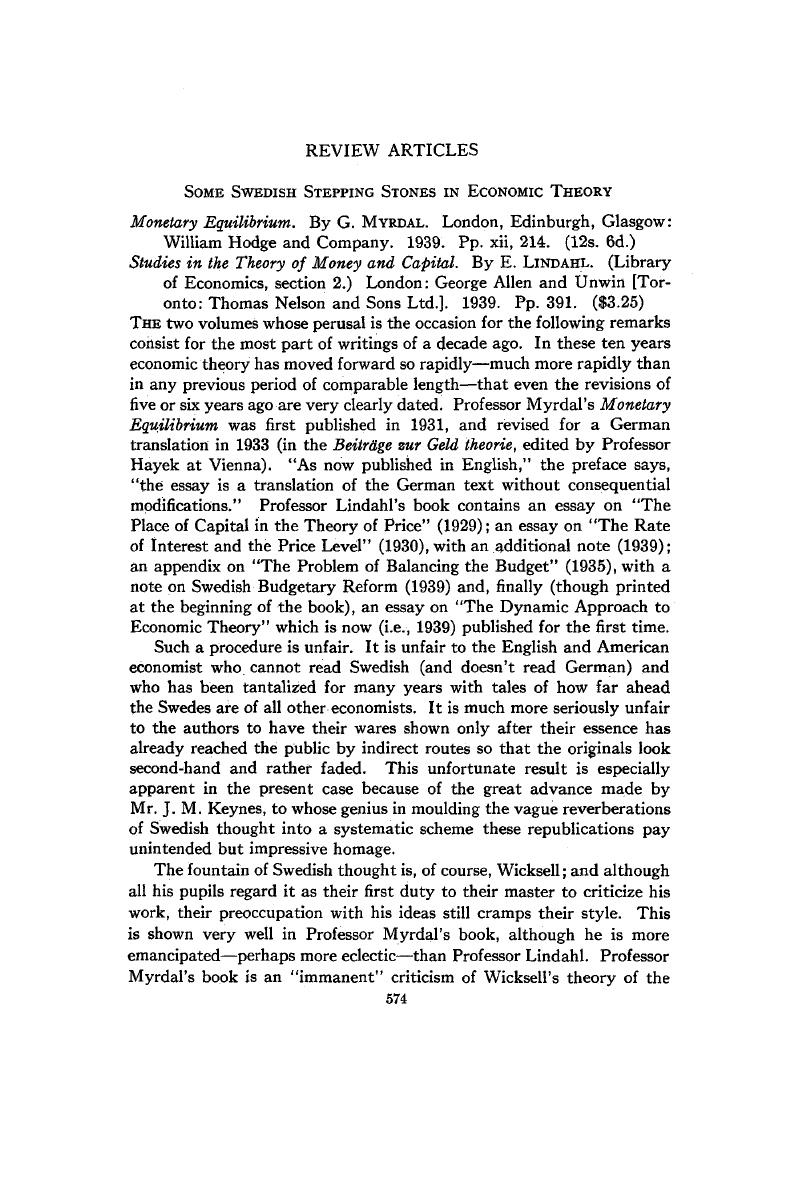Article contents
Some Swedish Stepping Stones in Economic Theory
Published online by Cambridge University Press: 07 November 2014
Abstract

- Type
- Review Articles
- Information
- Canadian Journal of Economics and Political Science/Revue canadienne de economiques et science politique , Volume 6 , Issue 4 , November 1940 , pp. 574 - 591
- Copyright
- Copyright © Canadian Political Science Association 1940
References
1 A slight amplification may be in order here. While it is clear that total payments must equal total receipts, not all receipts can be called income. Some of the proceeds from the sale of goods and services may constitute not income for the seller but costs to him incurred in producing the goods and services; only the excess of the proceeds over his costs being his income. But in that case these costs are paid out to others and constitute their income, or are paid out by them as costs to a third or fourth party, so that ultimately all the payment for the first-mentioned finished goods and services must finish up as somebody's income. Starting with the total payments and total receipts (which must be equal), if on the one hand we do not count such receipts as are not income because they merely cover costs, and on the other hand we leave out the payments that constitute these same costs, we must be left with a net total of payment for goods and services which is necessarily equal to total income.
2 A11 it could say was that everything depended upon everything else, that (because the number of equations was equal to the number of unknowns) there were a finite number of solutions that could conceivably be worked out in an indefinitely long period if the contents of all the indefinitely large number of equations were known, and that one of these solutions would describe the actual state of affairs that would be reached if the content of the equations (distribution of income, available resources, technical knowledge, and consumers' tastes) remained stationary during the unknown period that it would take for equilibrium to be reached.
3 See Lerner, A. P., “Capital, Investment and Interest” (Proceedings of the Manchester Statistical Society, 1936–1937).Google Scholar
4 Given by Böhm Bawerk for the existence of a positive rate of interest, namely the greater productivity of (some) roundabout (time-using) methods of production.
5 See Lerner, A. P., “Alternative Formulations of the Theory of Interest” (Economic Journal, 06, 1938).CrossRefGoogle Scholar
6 Myrdal, , Monetary Equilibrium, p. 8.Google Scholar
- 11
- Cited by




